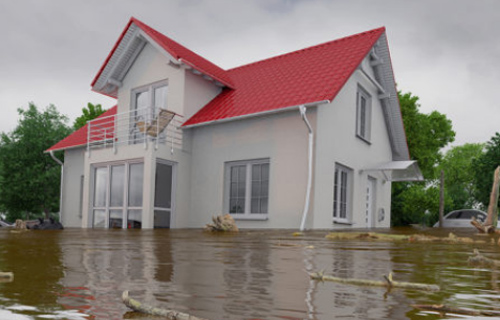What Do You Need to Know About Asbestos During Flood Restoration

If your home has been impacted by flooding due to increased rains and the resulting overflow from rivers, streams, and coastal areas, focus on safety above all else. When your house is flooded, renovation might be dangerous because a home with damage can also uncover household threats, such as asbestos.
Asbestos is not normally harmful unless disturbed. However, floodwaters can damage the integrity of buildings, exposing asbestos fibers contained in flooring, walls, and ceilings and bringing this dangerous material to the surface.
Asbestos Exposure From Flooding
When asbestos-containing materials are subjected to floods or storms, the bonding material - mainly cement - breaks down and allows asbestos fibers to be released into the atmosphere. This is when asbestos becomes what is known as friable, and extremely dangerous. Furthermore, some asbestos fibers are waterproof and can sit on the surface of the water, risking being inhaled. As we all know when asbestos fibers are breathed in, they cause long-term damage to the lungs which can lead to conditions like mesothelioma, asbestosis, lung cancer, and more.
The safest methods of restoration depend mainly on:
- the type of construction
- the materials of the home
- the level of damage
If your house was built prior to the 1980s, it is possible to be exposed to asbestos when you undertake do-it-yourself restoring projects as the result of water damage to the house. Most often asbestos can be mixed with other materials and can occur virtually anywhere in your home, including:
- Roofing felt
- Floor tiles
- Ceiling tiles
- Wall panels
- Textured paints
- Popcorn ceilings
- Attic and pipe insulation
- Window and door caulking
- Adhesives
- Heating and cooling systems
- And more
After the Flood Waters Recede, Most People Want to Do Home Restoration
Depending on the severity of the flood, you may have been forced to leave your home for safety reasons. Upon returning, greater asbestos awareness will help ensure the adversity of the floods does not become a health crisis in the long term.
The following are the minimum precautions that should be taken during flood clean up:
- Use only properly fitted NIOSH-approved respirators for protection against asbestos fibers
- Disposable coveralls, gloves, hats, and other protective clothing should be used
- Keep all asbestos-related debris wet and covered to minimized dust
- While it is easier to remove and handle small pieces, do not break or damage any material which may contain asbestos. You are more likely to release asbestos fibers if you break the materials
- If a submerged wood subfloor swells or separates, flooring will need to be removed. Asbestos tiles should be removed only by a trained and accredited asbestos professional
- If the structure of your home was partially destroyed by flooding, the site should be secured and contained and a licensed asbestos abatement contractor immediately contacted to remove any asbestos-containing materials from the debris
- Do not use a typical vacuum cleaner, as it can blow fine dust into the air
- Use a HEPA filter vacuum and damp-wipe methods
- Place all removed materials into waste bags approved for asbestos disposal
- Asbestos-laced clothing should not be put in a conventional washing machine as they may contaminate other clothing; ideally, the clothes should be disposed of
Friable Asbestos-Containing Materials Must Be Removed by a Licensed Asbestos Abatement Contractor
If you are concerned asbestos might lurk in your house and would like to know with certainty how safe your living space is, feel free to send in a sample of the material in question for certified experts to analyze. Testing products in your house for asbestos is crucial to ensure your family's well being.
When damaged by flood, asbestos should be repaired or removed by a professional. A repair usually means either covering or sealing the asbestos material. Covering means enclosing the asbestos material by placing a protective wrap over or around it thereby preventing any fibers from being released. Sealing involves treating the material with a sealant that can temporarily keep the asbestos fibers in their original material or coats the material so no fibers are released. Repair is usually much less costly than removal, but many professionals say that some repairs can make it more difficult and also more costly to remove the asbestos later if the need arises.
